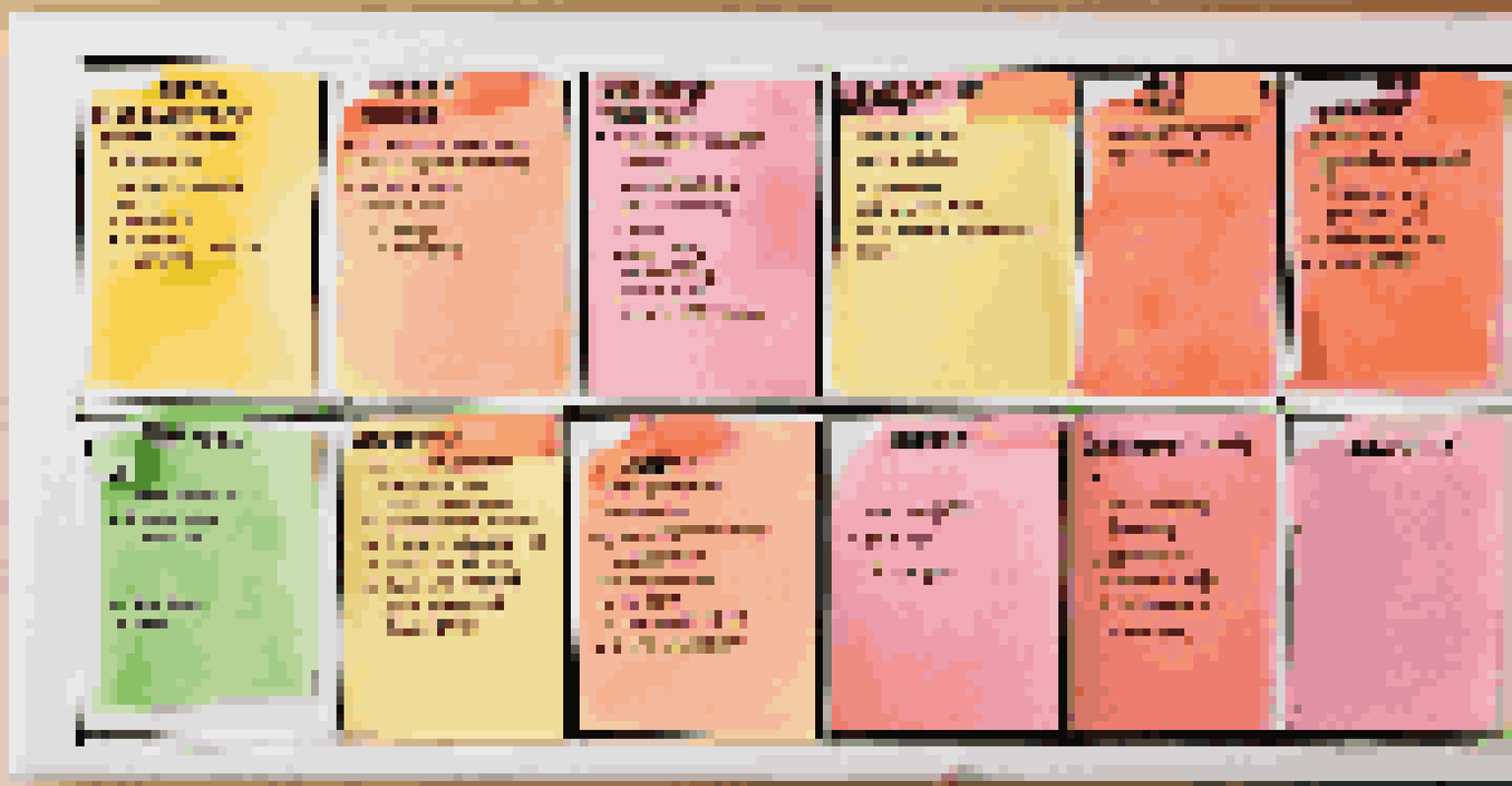Balancing Multiple Gigs: Time Management Strategies

Understanding the Challenges of Managing Multiple Gigs
Balancing multiple gigs can feel like juggling flaming torches; it requires focus and agility. Each job demands attention, and the mental load can become overwhelming. Understanding these challenges is the first step toward effective time management.
Time management is life management.
Many gig workers find themselves in a constant race against the clock, trying to meet deadlines for various clients. This can lead to stress and burnout if not managed properly. Recognizing when you’re feeling stretched too thin is crucial.
It's also important to remember that not every gig is created equal. Some may require more time and energy than others, so being aware of these differences can help you allocate your resources more effectively.
Setting Clear Goals for Each Gig
When you have multiple gigs, setting clear goals can serve as your roadmap. Think of these goals as your guiding stars; they help you navigate through the chaos. Break down larger tasks into manageable parts to keep things from feeling overwhelming.

For example, if you’re a freelance writer juggling several clients, set daily or weekly word count targets for each project. This not only helps you stay on track but also gives you a sense of accomplishment as you meet each milestone.
Manage Multiple Gigs Effectively
Understanding the challenges of juggling multiple gigs is essential for effective time management and reducing stress.
Having specific, measurable goals allows you to monitor your progress and adjust your strategies as needed. It creates a sense of accountability, making it easier to prioritize your tasks effectively.
Creating a Flexible Schedule That Works for You
A flexible schedule is like a well-tailored suit; it fits perfectly and adjusts to your needs. Start by mapping out your commitments for the week, including deadlines and meetings. This visual representation can help you see where your time is going.
The key is not to prioritize what's on your schedule, but to schedule your priorities.
Don’t forget to include buffer times for unexpected tasks or delays. Life is unpredictable, and having that extra time can prevent you from feeling rushed. Just like a good recipe, a little flexibility can lead to better results.
Experiment with different scheduling techniques, such as time blocking or the Pomodoro Technique, to find what resonates with you. The key is to create a routine that promotes productivity without sacrificing your well-being.
Prioritizing Tasks with the Eisenhower Matrix
The Eisenhower Matrix is a powerful tool for prioritizing tasks based on urgency and importance. Imagine it as a sorting hat for your to-do list, helping you categorize tasks into four quadrants. This clarity can significantly enhance your productivity.
Start by listing all your tasks and then categorize them: urgent and important, important but not urgent, urgent but not important, and neither. This process allows you to focus on what truly matters, reducing overwhelm.
Set Clear Goals for Success
Establishing specific, measurable goals for each gig can help you stay organized and motivated.
By clearly identifying which tasks require immediate attention and which can wait, you’ll make more informed decisions about where to invest your time. This method not only boosts efficiency but also helps you manage stress.
Embracing Digital Tools for Efficiency
In today’s digital age, leveraging technology can be a game changer for managing multiple gigs. Tools like Trello, Asana, or Todoist can help you keep track of tasks, deadlines, and even collaborate with clients seamlessly. Imagine these tools as your digital assistants, keeping everything organized.
Scheduling apps like Google Calendar can also help you visualize your day, setting reminders for important tasks. This way, you won’t miss a beat, whether you’re working on a freelance project or attending a meeting.
Embracing these digital tools not only saves time but also allows you to streamline your workflow. By automating repetitive tasks, you can focus on what you do best, enhancing your overall productivity.
Taking Breaks: The Power of Rest and Recharge
It may seem counterintuitive, but taking regular breaks can actually boost your productivity. Think of breaks as mini-recharges for your brain; they help prevent fatigue and keep your creative juices flowing. Schedule short breaks throughout your day to step away from your work.
Engaging in activities you enjoy during these breaks, like going for a walk or practicing mindfulness, can rejuvenate your mind. This not only helps reduce stress but also improves your focus when you return to your tasks.
Embrace Flexibility and Tools
Creating a flexible schedule and utilizing digital tools can enhance your productivity and help you manage your commitments more efficiently.
Remember, balance isn’t just about managing time; it’s also about managing energy. Prioritizing self-care and downtime is crucial for long-term success in juggling multiple gigs.
Reflecting and Adjusting Your Strategies Periodically
Reflection is essential for continuous improvement, especially when managing multiple gigs. Set aside time each week to assess what worked and what didn’t. This process is like tuning a musical instrument; it helps you stay in harmony with your goals.
Ask yourself questions like, 'Did I meet my deadlines?' or 'What tasks drained my energy?' This self-assessment can reveal patterns that you might want to adjust. Perhaps you need to delegate more or change your workload.

By regularly evaluating your strategies, you can adapt to changes and find better ways to balance your commitments. This proactive approach ensures that you remain effective while managing multiple gigs.